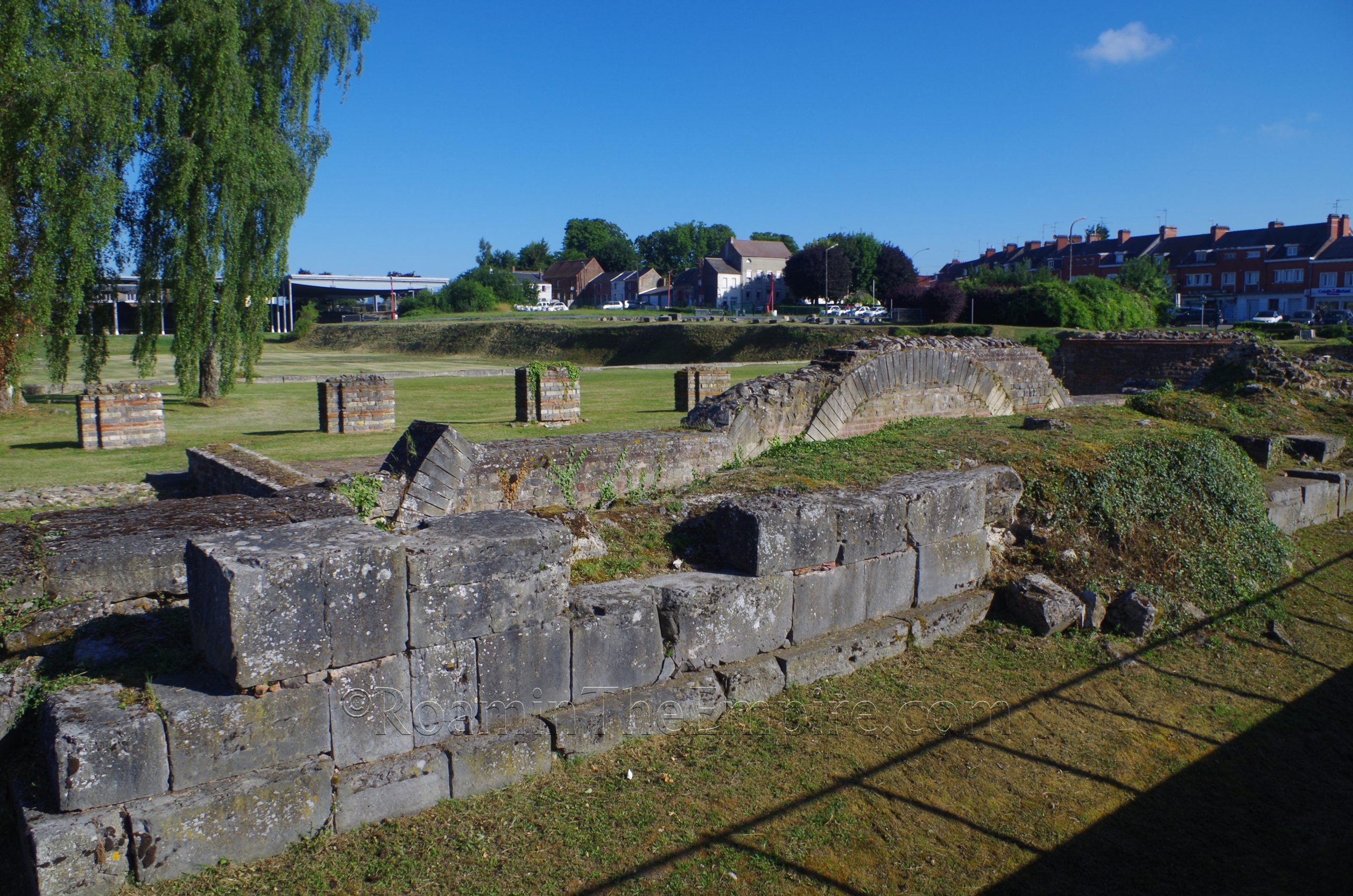
Most Recent Visit: July 2022
Prior to the arrival of Roman hegemony, the settlement of Bagacum (modern Bavay) was located in the territory of the Nervii. The Nervii are not mentioned prior to Julius Caesar’s writings, but he describes them as one of the most formidable of the Belgic peoples. Caesar relates a battle in 57 BCE at the Sabis (modern Selle) in which an army led by the Nervii ambushed a Roman army, nearly defeating them before Caesar personally intervened in the battle (and reinforcements arrived), but which lead to the destruction of the army and apparently much of the Nervii’s manpower. They again appear in 53 BCE, joining the siege of the camp of Quintus Tullius Cicero (brother of Marcus Tullius Cicero) before being defeated, and are said to have contributed some forces to the Gallic confederation at the Battle of Alesia in 52 BCE.
The Nervii seem to have had their own settlement called Bagacum, but it was not located at the site of Roman Bagacum, and has yet to be identified. The Roman-era settlement of Bagacum was founded to be a capital/administrative center for the Nervii sometime after the Battle of Alesia. Its place as an important junction for a number of roads would seem to suggest the location was at least planned out during Agrippa’s development of the road network in Gaul around 40 BCE. Other suppositions suggest a slightly later foundation during Augustus’ reorganization of Gaul around 22 BCE, which placed Bagacum in the province of Gallia Belgica. It was certainly established by 4 CE, when a dedication found there notes a visit by the future emperor Tiberius.
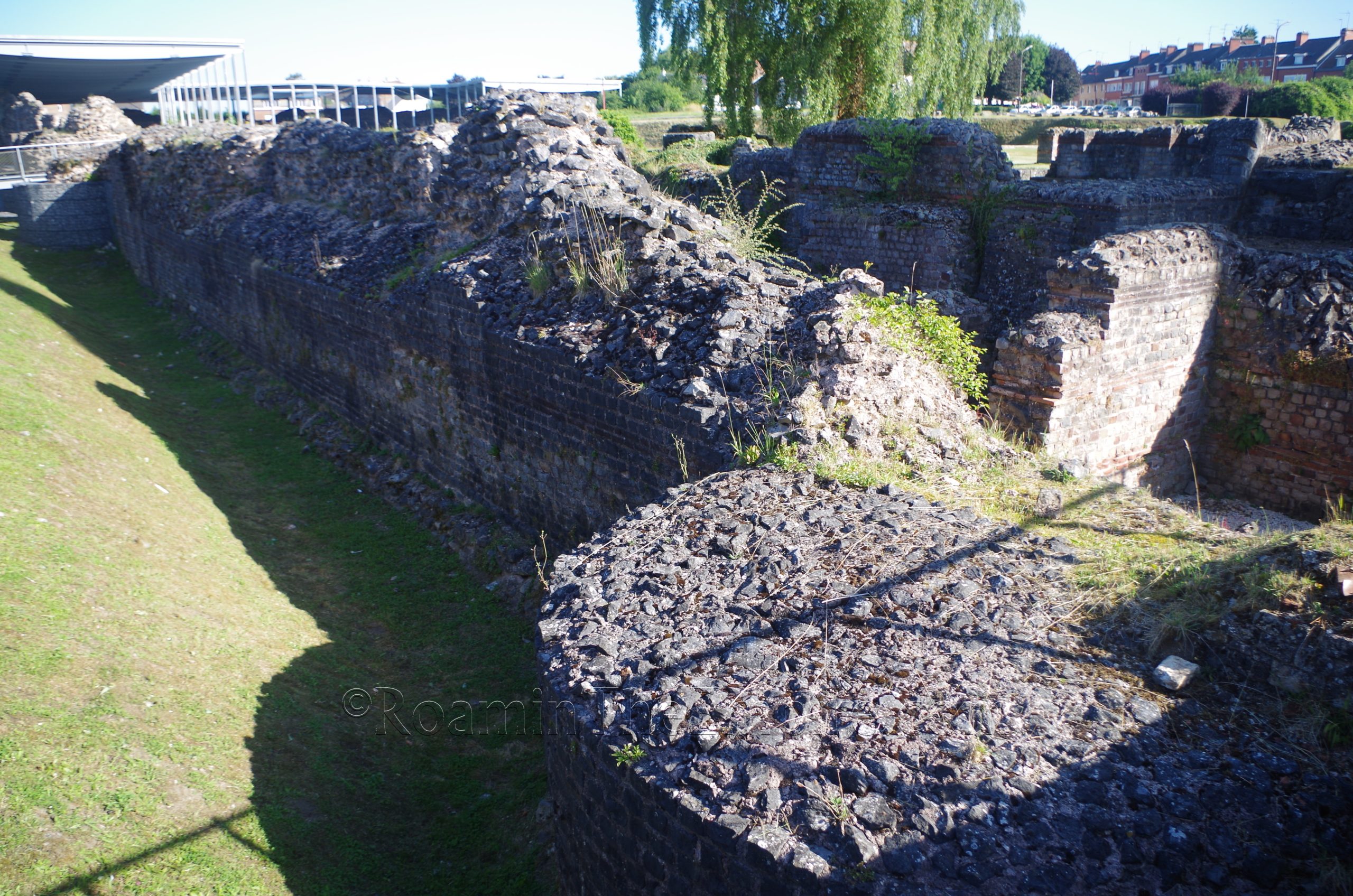
Bagacum flourished in the 1st century CE when much of the monumental core of the city was built. During the revolt of the Batavi in 69-70 CE, the Nervii remained loyal to the Romans. The city continued to grow in the 2nd century CE, reaching its peak before likely suffering significant damage at the hands of the Chauci sometime between 170 and 175 CE. Bagacum again suffered during incursions through the mid to late 3rd century CE, in which the settlement was almost completely destroyed. Only a small portion of the once flourishing city was rebuilt and the capital of the Nervii was transferred to Camaracum. Bagacum seems to have been largely abandoned by the 5th century CE and would not be a population center again for several hundred years.
Getting There: The modern town of Bavay is not particularly large and it isn’t connected by rail. The proximity to the Belgian border also makes it difficult to get to from some of the closest cities. The closest place with a rail connection from larger French cities is Maubeuge, and bus line 951 runs from the train station at Maubeuge to the Porte de Mons in Bavay, which just a short 5 minute walk from the archaeological areas and museum. The trip is only about a half an hour, but it doesn’t run incredibly frequently. The schedule can be found here.
Most of the visible archaeological remains of ancient Bagacum are contained in the Forum Antique archaeological site, which is operated in tandem with the adjacent Musée Archéologique de Bavay. A single ticket for both is bought at the archaeological museum. The museum and site are located at 2 Rue de Gommeries, not far from the center of the modern town. They are both open on Wednesday and Sunday from 13:00 to 18:00, and the rest of the week from 9:00 to 12:00 and 13:00 to 18:00. Admission is 6 Euros.
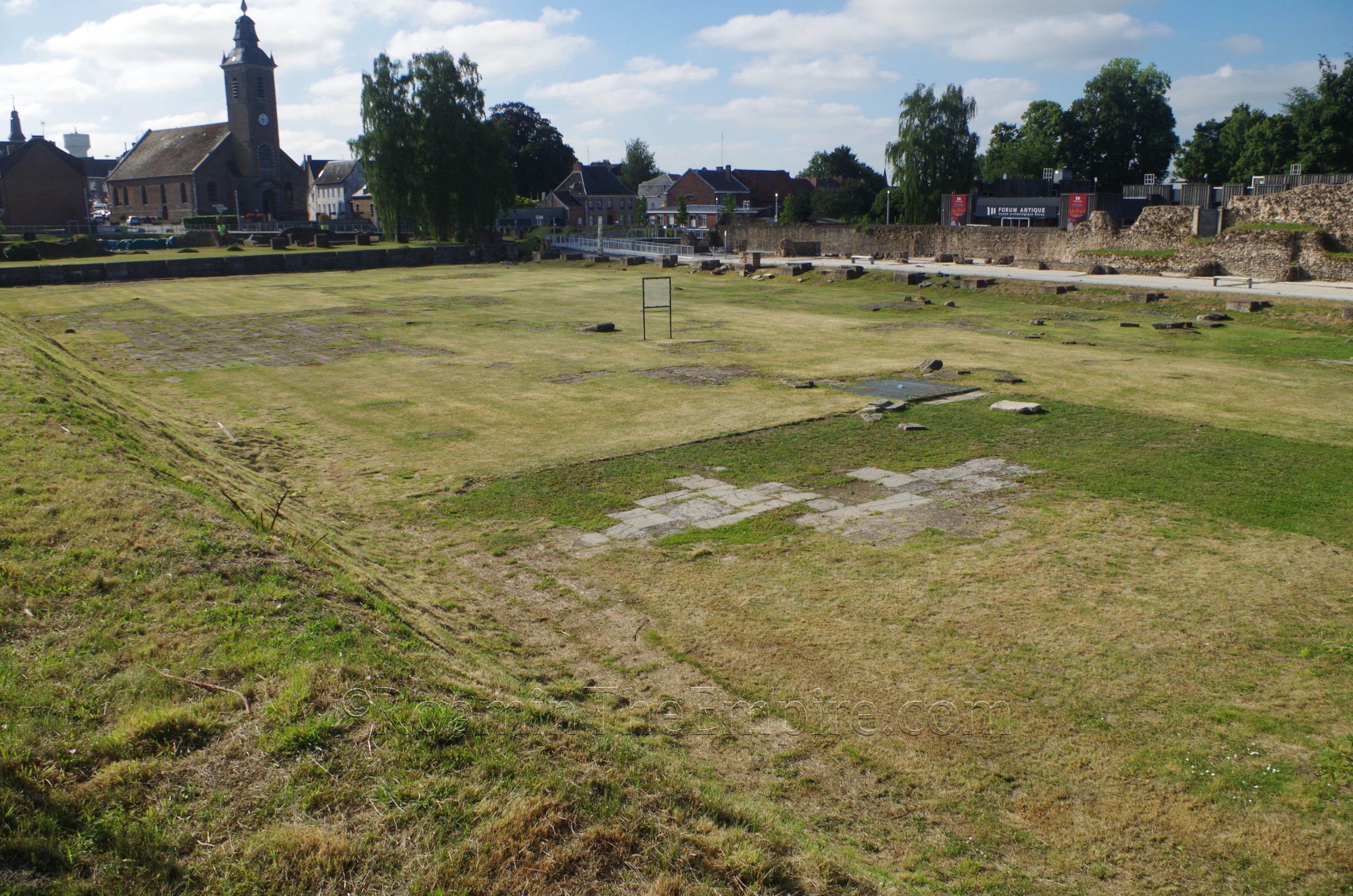
As the name of the archaeological area would suggest, what remains visible consists of the forum of Bagacum and the buildings immediately surrounding it. The forum is accessed on the south side near the museum. What is immediately evident before even entering the forum is the robust wall visible along the outside of the structures, and two tower-like structures flanking the entrance, with another visible 40 meters farther southeast. This robust wall and towers were part of the late 3rd century CE and 4th century CE fortifications that were built around the forum and some of the other structures in the core of the city following the 3rd century CE destruction mentioned earlier. In order to make the city more defensible, the footprint was reduced significantly and only the area of the forum was encircled with the 3rd century CE walls. These were later extended to the south in the 4th century CE. The present ingress into the forum was actually a gate access point following this modification. The walls are visible wrapping around the end of the excavated forum. These are visible from outside the archaeological area along Rue des Remparts/Rue des Clouteries. The tower to the southeast was the corner tower of the 3rd century CE walls. The walls that enclosed the north side of the forum are no longer extant.
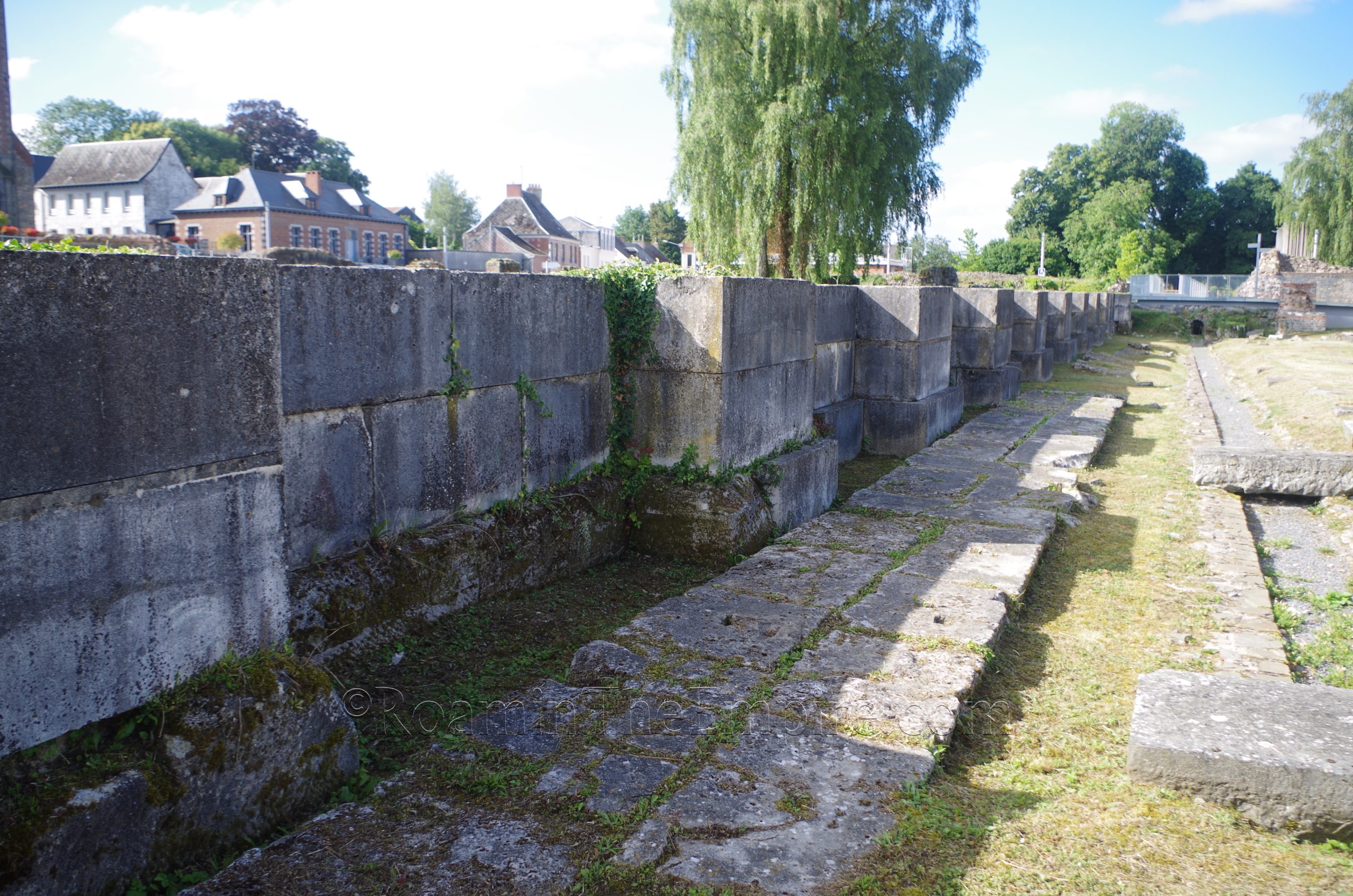
Inside the archaeological area, to the right is the civic basilica. This area is not directly accessible, as it is elevated somewhat above the rest of the forum, but parts of it are visible from outside the site, including the remains of the row of tabernae along the south side that were rendered obsolete by the construction of the fortification wall. The remains of the 3rd century CE fortification wall are also visible along the eastern side of the basilica. Inside the site, the robust western wall of the basilica is preserved and visible. The forum had two primary phases of construction, the first being in the middle of the 1st century CE. In the late 2nd century CE, the forum area was mostly dismantled and then rebuilt.
The western side of the basilica faced onto the open area of the forum, which by the early 3rd century CE had largely lost its original function. Some patches of the forum paving stones still remain scattered around the area and are visible. At the west end of the forum is an elevated area of ground, which was also elevated in antiquity. On this spot was a temple of undetermined dedication, and of which only very few traces remain. It was accessed by a monumental staircase, again, very few traces of which remain today. The footprint of the walls is pretty easy to see on some satellite images of the site, though.
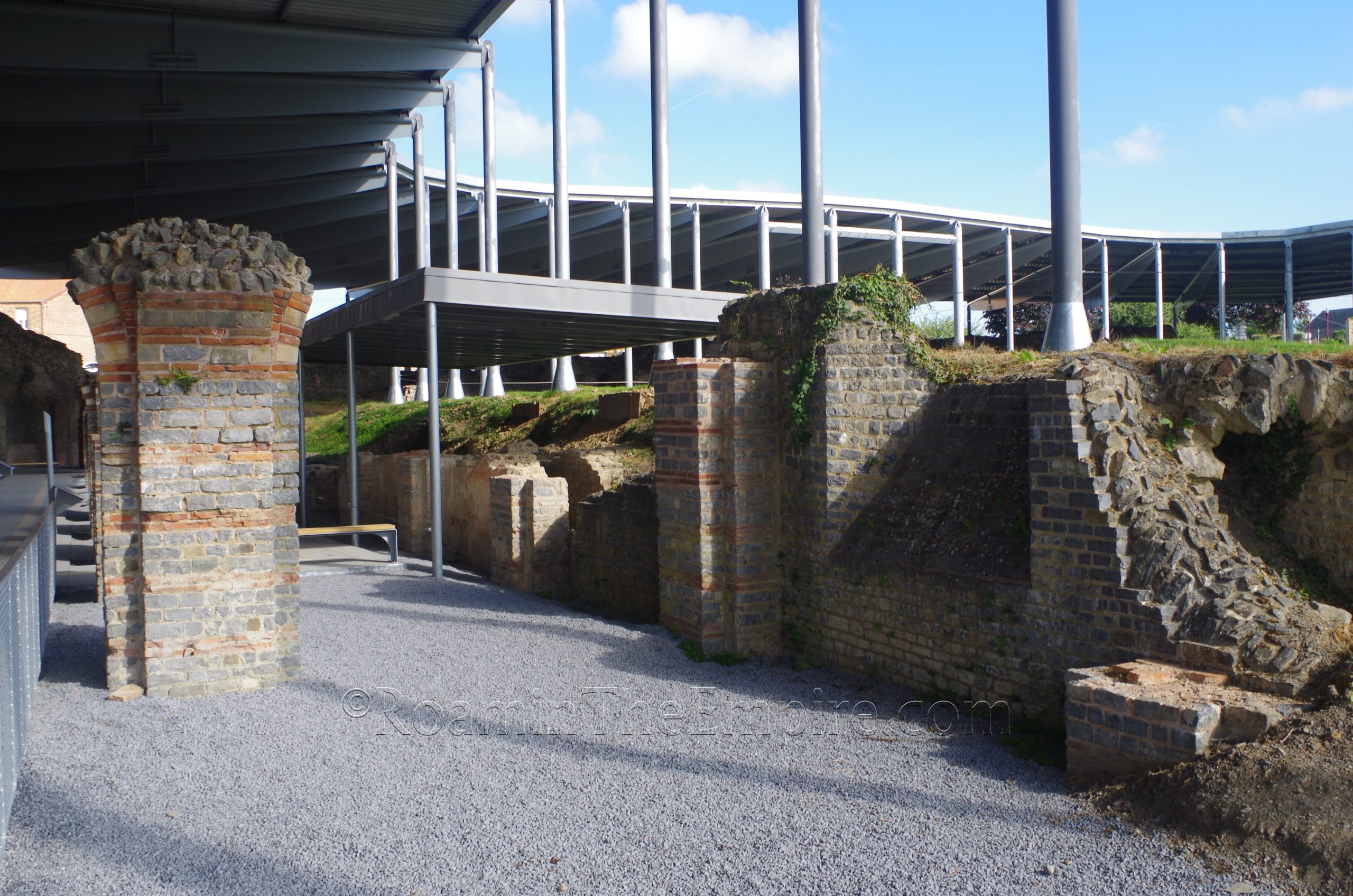
Stretching along the southern side of the forum is a portico. In 2022, a roof was put over the southern and western sides of the forum in order to protect the remains. Not much remains of the stalls that would have lined the portico here. Once the portico approaches the elevated temple platform, though, it would have split into two levels. One level would have dropped down and along with temple platform, created a cryptoporticus that ran mostly underground. A staircase also would have led to an elevated upper portico, both of which would have continued around the west side of the forum and ended at the corresponding spot on the north side of the forum, which is no longer extant. There are no real remains of the upper portico visible.
Descending slightly into the area of the cryptoporticus, there are remains of fresco wall painting preserved on some of the walls. In particular, the best preservation is abutting the temple mound area. This is presumably due to the mound erosion covering the wall and a later excavation. Just before the fresco wall is a good example of a light well that opened up into the ground level of the temple mound and would have provided a source of illumination in the crytoporticus. A pillar with some curvature from the vaulting of the ceiling of the cryptoporticus is also visible here. Opposite the frescoed wall is a good example of the two different construction periods of the forum. A sign helps to differentiate the 1st century CE building phase with a yellowish mortar and lack of intermittent brick courses, and the later 2nd century CE construction employing a more white mortar with intervals of brick. The older construction is used in one of the recessed areas of the cryptoporticus here, while the later construction is visible in the bases for the arch supports.
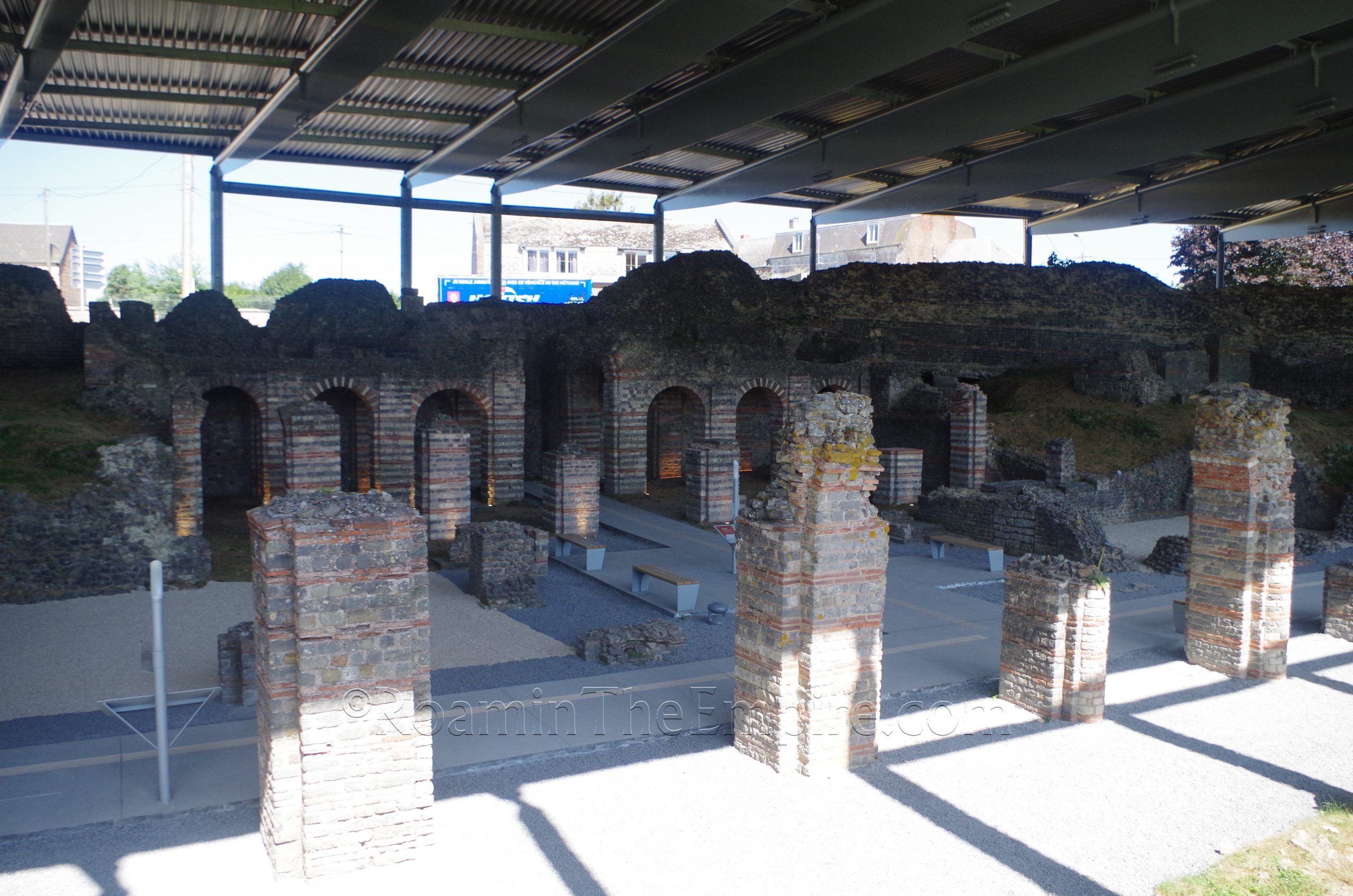
The cryptoporticus area continues on to the west and ends in an apse, and then turns to the north and enters into an area with a large vestibule and hall area. The hall, at the very west end of this complex, has some internal arched structures which are preserved/reconstructed. The very back wall of this hall, in the center, has the remnants of a light well which was filled in after the construction of the fortification wall that incorporated the rear wall of this hall. Unfortunately, the specific use (if any) of this area is unknown, though it has been theorized it may have had some religious connection owing to the proximity to the temple area, possibly something relating to the imperial cult. It has also been posited to be a curia.
Only a very small portion of the northern portico/cryptoporitcus survives, but the area does lead out onto a rise that gives good views of the rest of the forum. The forum itself has a pretty linear visitors path. There are a number of informational signs in French that contain German and English translations as well as helpful diagrams. It took roughly an hour for me to walk around the forum.
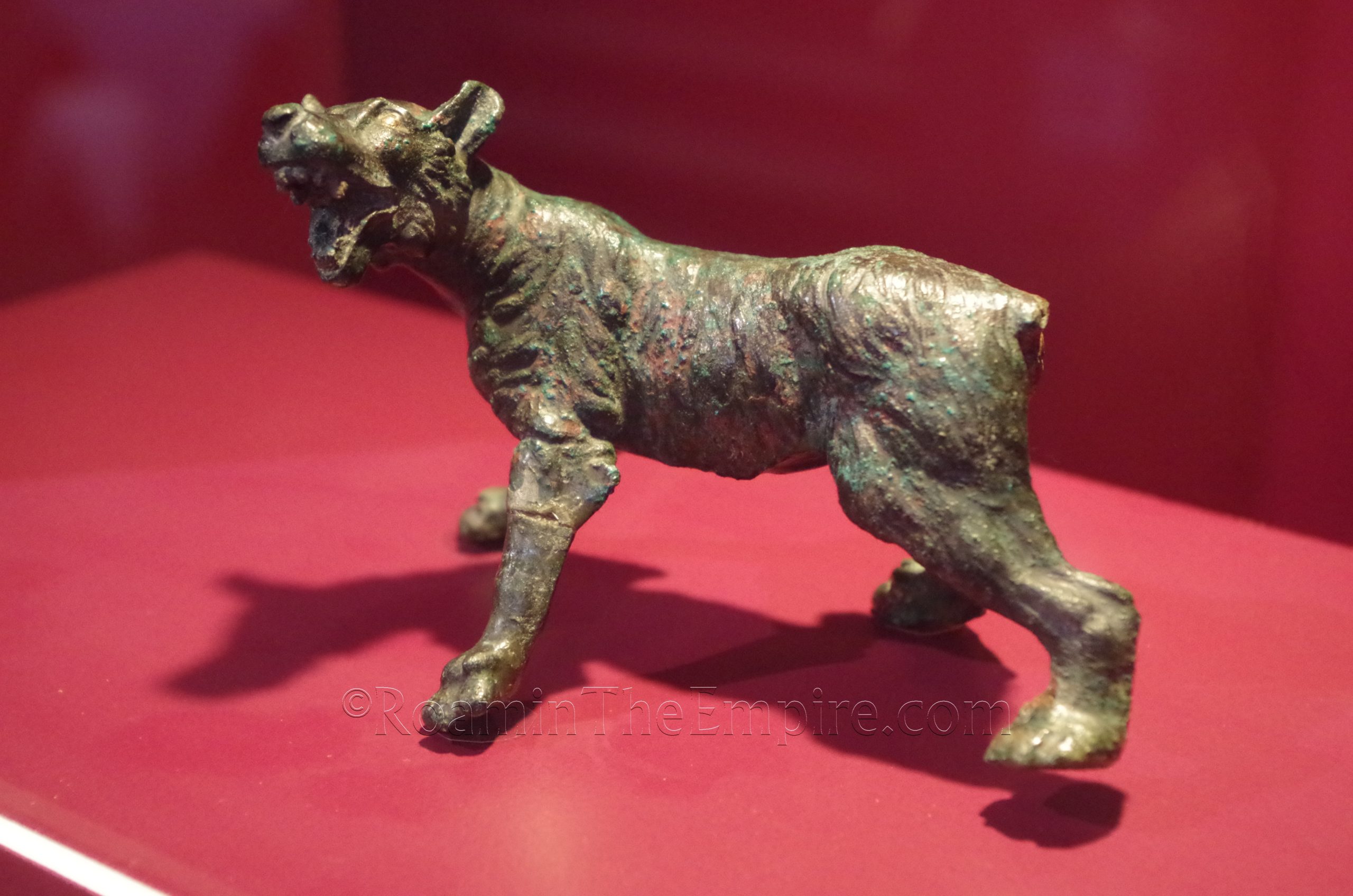
The adjacent museum is a decent size and has a number of good artifacts. The collection of smaller bronze objects is particularly good and fairly extensive for a museum of this size. A number of them are very nice, including one of a dog (or wolf) with inlaid silver embellishments and a statuette of the so-called Mater of Bavay. There are a few inscriptions, but interestingly not the inscription noting Tiberius’ visit to Bagacum. Two inscriptions of particular interest are an altar dedicated to the genius of the territory of the Nervii, very broadly dated to the Gallo-Roman period (so any time between 52 BCE and the 5th century CE) and an inscription from the ponderarium. A mosaic from a house found in the vicinity is also on display here.
The biggest shortcoming of the museum is that, unlike the information at the archaeological site, everything here is in French. And there is quite a bit of information for some of the objects, but the lack of additional translations kind of leaves the non-francophone visitor missing out on a lot of information. It’s still a very good museum. It took me about an hour and a half to go through, clocking in the whole archaeological site and museum combination at about 2.5 hours.
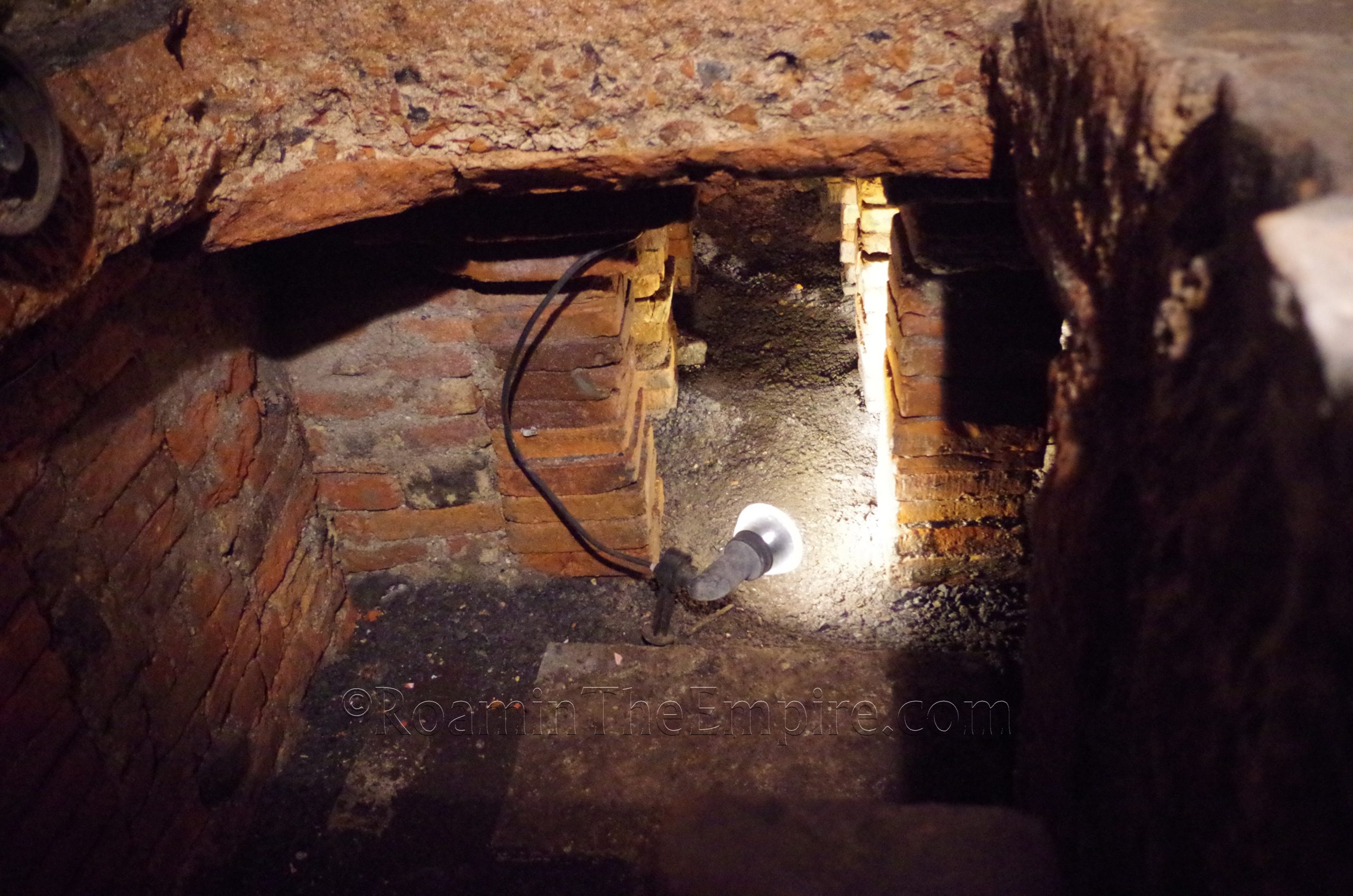
There’s one last spot to visit a few minutes away. At 10 Rue Saint-Maur (just across the street to the north from the cathedral) is the tourist information office, in which a small bit of a bathing complex is located. It’s open Monday, Tuesday, Thursday and Friday from 9:30 to 12:30 and from 14:00 to 18:00. On Wednesday and Saturday, it is only open in the afternoon from 14:00 to 18:00. It is closed on Sunday. There’s no admission fee. Upon entering, just inquire about the hypocaust and they’ll happily point you down a small stairway into the basement. Here you can see a very small bit of the hypocaust of one of the heated rooms and a few partial statues. It’s more or less a 5 minute visit. There’s a small informational sign in French, but it really is just a peak in at the bottom of some stairs.
All told, Bagacum makes for a good half day trip that can be comfortably done in under 3 hours.
Sources:
Besuijen, Gus. Roadanum: A Study of the Roman Settlement at Aardenburg and Its Metal Finds. Sidestone Press: Leiden, 2008.
Caesar, Julius. Commentarii de Bello Gallico, 2.4, 2.16-2.32, 3.5, 5.24, 5.38-5.58, 6.2-6.3.
Dio, Cassius. Historiae, 39.3, 40.7.
Livy. Periochae, 104.5.
Plutarch. Caesar, 20.6-20.9.
Ptolemy. Geographika, 2.9.6.
Smith, William. Dictionary of Greek and Roman Geography. Walton & Murray, 1870.
Stillwell, Richard, William L. MacDonald, and Marian Holland. McAllister. The Princeton Encyclopedia of Classical Sites. Princeton, NJ: Princeton U Press, 1976.
Tacitus. Historiae, 4.56-4.66, 4.79.
Tacitus. Germania, 28.


